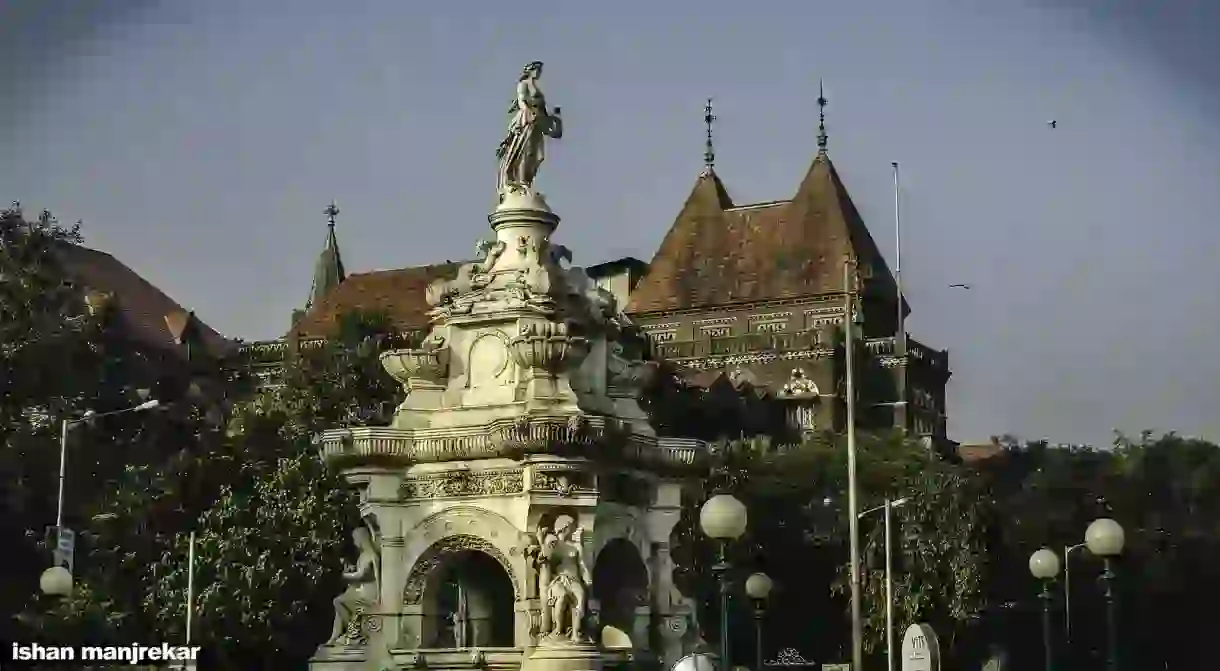The History Of The Flora Fountain, Mumbai In 1 Minute

Flora Fountain, also known as the Hutatma Chowk since 1960, is an exquisitely sculpted structure located in the heart of South Mumbai. Flora Fountain was initially named after the Governor of Bombay, Sir Bartle Frere, but just before the fountain’s inauguration in 1864, the name ‘Flora’ was bestowed on it, after the Roman Goddess of flowers and the season of spring. In 1960, the fountain became known as Martyr’s Square, or Hutatma Chowk, with an impressive stone statue bearing a pair of torch holding patriots, to honor the 105 members of the Samyuktha Maharashtra Samiti who lost their lives while fighting for a separate Maharashtrian state.
The Flora Fountain was constructed by the Agri–Horticultural Society of Western India in 1864, out of a donation by Cursetjee Fardoonjee Parekh. Designed by Richard Norman Shaw, it was sculpted from imported Portland stone by James Forsythe. A magnificent statue of the Roman Goddess is installed at the top of the structure, making the fountain edifice look even more beautiful. However, according to some, its white coat of oil paint has to some extent marred the antiquity of the fountain.

Located in the heart of South Mumbai, Flora Fountain is very close to the Chattrapati Shivaji Terminus as well as Churchgate. Within walking distance of the fountain, you can find some of the most impressive institutions and buildings of Mumbai, such as the University of Mumbai, the old Secretariat, the Gateway of India, the Bombay High Court, the Central Telegraph Office and many other heritage buildings. The fountain is especially beautiful at night when illuminated.













